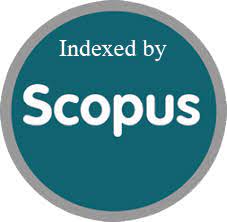Ritu Haritaki (Seasonal Regimen with Indian Rhubarb) – A Boon to Seasonal Health.
DOI:
https://doi.org/10.52783/jns.v14.3787Keywords:
Antioxidant and Immunomodulation, Anupana, Ritu, chebula, Terminalia, HaritakiAbstract
Haritaki, scientifically known as Terminalia chebula, is a prominent herb used in traditional Ayurvedic medicine. Haritaki is a deciduous tree native to South Asia, with the fruit being the most utilized part in medicinal preparations. It is characterised by its astringent taste and is believed to balance the doshas in body. It possesses five rasas except lavana with Kashaya rasa predominant. Haritaki is renowned for its therapeutic properties including its antioxidant, anti-inflammatory and antimicrobial activities. It is Rasayana (rejuvenator) and best among pathya (wholesome to body). Its Rasayana effect will be achieved by consuming it with different anupanas (vehicle) in different ritus (seasons) known as Ritu haritaki. Haritaki is considered as mother. Like mother takes care of whole family, similarly Haritaki will takes care of body. Intake of haritaki in every ritu along with different anupana is known as Ritu haritaki which promotes digestive health, enhances immunity and acts as detoxifier. In this article a systematic review has been done to gather information from available literature of Ayurveda and contemporary science regarding haritaki and its consumption in every season with different anupana with possible scientific substantiation.
Downloads
Metrics
Downloads
Published
How to Cite
Issue
Section
License

This work is licensed under a Creative Commons Attribution 4.0 International License.
You are free to:
- Share — copy and redistribute the material in any medium or format
- Adapt — remix, transform, and build upon the material for any purpose, even commercially.
Terms:
- Attribution — You must give appropriate credit, provide a link to the license, and indicate if changes were made. You may do so in any reasonable manner, but not in any way that suggests the licensor endorses you or your use.
- No additional restrictions — You may not apply legal terms or technological measures that legally restrict others from doing anything the license permits.










